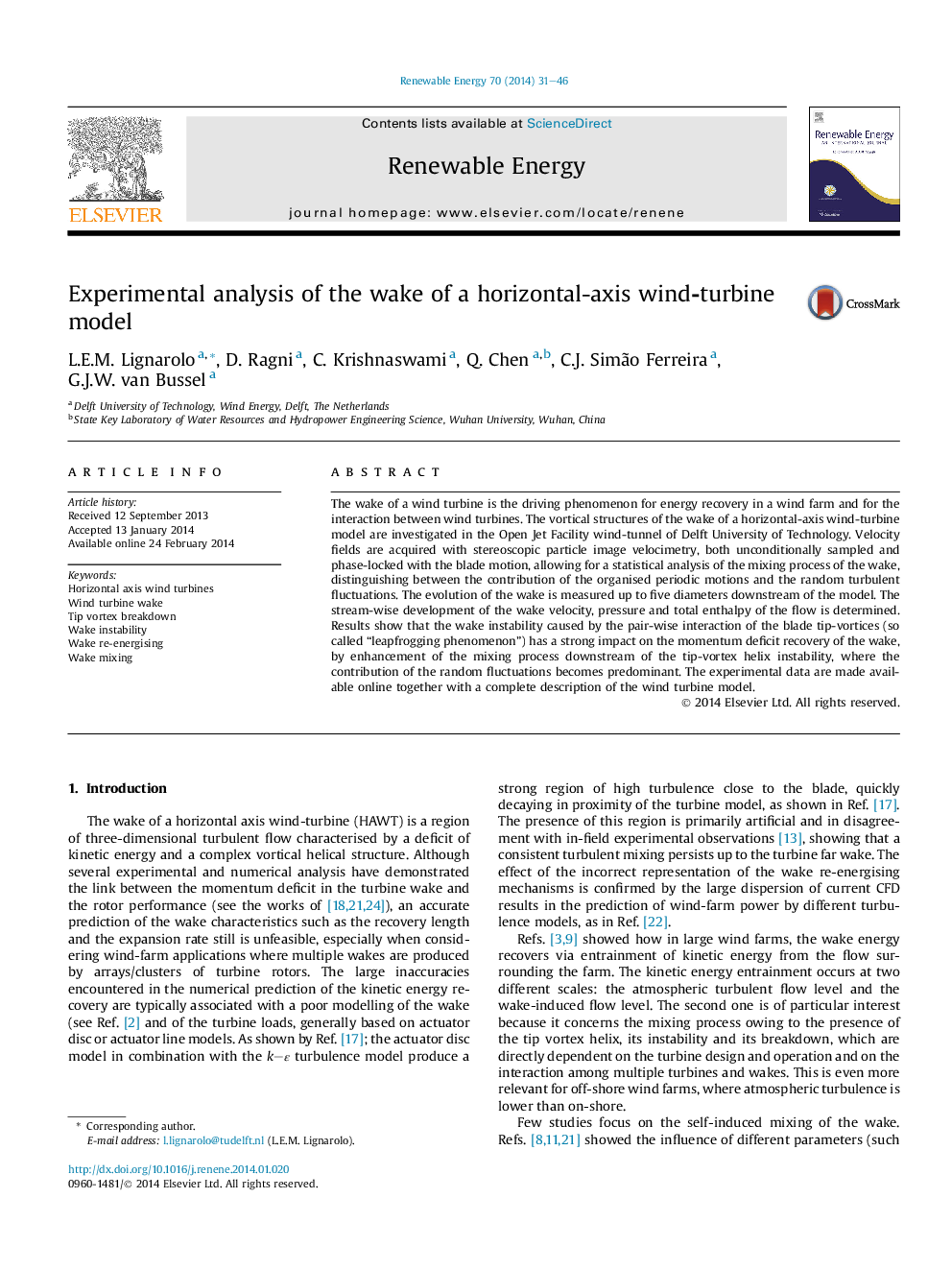| Article ID | Journal | Published Year | Pages | File Type |
|---|---|---|---|---|
| 300051 | Renewable Energy | 2014 | 16 Pages |
•The wake of HAWT is measured with stereo PIV till 5 diameters downstream.•An ad-hoc 60-cm diameter model wind turbine is designed.•Time and phase average velocity, Reynolds stresses and vorticity are measured.•The relation between wake re-energising and instability is visualised.•The relation between wake instability and far wake turbulence is visualised.
The wake of a wind turbine is the driving phenomenon for energy recovery in a wind farm and for the interaction between wind turbines. The vortical structures of the wake of a horizontal-axis wind-turbine model are investigated in the Open Jet Facility wind-tunnel of Delft University of Technology. Velocity fields are acquired with stereoscopic particle image velocimetry, both unconditionally sampled and phase-locked with the blade motion, allowing for a statistical analysis of the mixing process of the wake, distinguishing between the contribution of the organised periodic motions and the random turbulent fluctuations. The evolution of the wake is measured up to five diameters downstream of the model. The stream-wise development of the wake velocity, pressure and total enthalpy of the flow is determined. Results show that the wake instability caused by the pair-wise interaction of the blade tip-vortices (so called “leapfrogging phenomenon”) has a strong impact on the momentum deficit recovery of the wake, by enhancement of the mixing process downstream of the tip-vortex helix instability, where the contribution of the random fluctuations becomes predominant. The experimental data are made available online together with a complete description of the wind turbine model.
